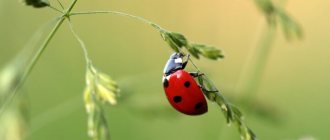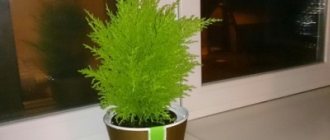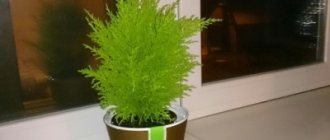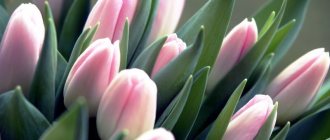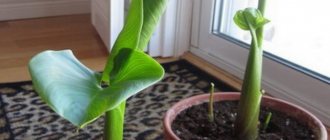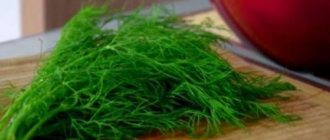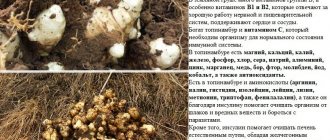For some, it is surprising to learn that the ladybug is a predator. They eat insects and their larvae, most of which are pests. The most favorite food of ladybugs is aphids and their larvae. One ladybug can eat more than 6,000 aphids in a year and a half. So these colorful bugs are unknowingly saving agricultural lands from harmful parasites.
In addition to aphids, the ladybug eats small pest caterpillars, slugs, eggs of butterflies and the Colorado potato beetle, scale insects and spider mites.
Features and habitat of the insect
The ladybug (from the Latin Coccinellidae) is a coleopterous insect of the order of beetles , which lives in almost all corners of the globe, except Antarctica and permafrost zones. In its natural habitat, this insect does not look defenseless - it is a pronounced predator.
The body of Coccinellidae has a hemispherical convex shape. The phase of intensive reproduction and development of beetles begins with the onset of spring and lasts until late autumn. The lifespan of a ladybug ranges from 3-4 months to a year, depending on the climatic conditions of the region and the availability of food.
The seven-spotted ladybird (from the Latin Coccinella septempunctata) is the most numerous and widespread species of the order. It is characterized by a pronounced color of the wings (red-orange tones) and black dots on them. It has a unique method of protection - in case of danger, it releases a characteristically smelling orange liquid. Developed wings enable the insect to fly.
The main enemies of Coccinellidae are spiders and the frogs that feed on them. They are of no interest to birds.
Brief information
Ladybugs are divided into two subfamilies of beetles: Microweiseinae and Coccinellinae. The territory of Russia and the CIS countries is inhabited mainly by beetles of the family Coccinellinae.
About 6,000 species are known throughout the world; about 260 species live in Europe, including Russia. The beetle benefits gardeners as it successfully fights various garden pests.
Interesting Facts
- The dots on the back of the ladybug do not allow us to draw conclusions about its age. The dots indicate that it belongs to a specific species.
- The beetle eats about 100 aphids per day.
- In nature, there are also yellow, orange, brown and black beetles, not just red.
- After hatching from the larva, it turns red after several flowers.
- They are poikilothermic (warm to the touch) animals.
- The Asian harlequin ladybug (H. axyridis) (orange and 19 spots) is threatening to wipe out the European ladybug variety. It reproduces massively and quickly, is resistant to parasites and competes with local beetles for food.
Harlequin ladybug (H. axyridis)
H. axyridis has been recognized as an insect pest in fruit production and processing. In the fall, there is a shortage of insects to feed them and adult harlequins begin to gather in flocks and feed on fruits such as apples, pears and grapes. This causes damage to the harvest, and toxic alkaloids that fall on the grapes further spoil the wine.
Nutrition and maintenance
In order to feed a ladybug, you need to know what it eats. Young individuals are very voracious. Ladybugs eat:
- aphids are the main source of food;
- psyllids;
- scale insects;
- scale insects;
- ticks.
Therefore, they can most often be found under the leaves of trees and plants, as well as in crevices of buildings and wooden window blocks.
Transparent glass or plastic containers with a closed top are ideal for home improvement. The best option would be a bottle or food box with a lid. But we should not forget that every living organism requires oxygen for life and development, so small holes must be made in the lid to allow air to enter the container.
The cow's home should be of such a size that it can fly short distances. A twig or any object with an internal hole is perfect as a sleeping place so that the animal can hide there. For variety and beauty, you can add flower petals or grass to the “interior”. It is important to prevent the leaves from rotting and drying in the container , changing them every two days.
It is not recommended to store the glass “house” in places with direct exposure to sunlight, since strong heating of the vessel can lead to detrimental consequences for the insect.
Food for keeping ladybugs at home can be:
- honey;
- sugar;
- lettuce;
- raisin;
- apples.
Water plays a special role in the nutritional diet of any organism. For convenience, you can place a metal bottle cap in your home and fill it with water. The water level in the drinking bowl should not exceed the height of the beetle's body so that it does not drown. It is enough to feed and water the insect 2-3 times a day, but it is important not to overfeed it. Meals should be taken in small portions.
What does a ladybug eat in winter?
In winter, ladybugs do not feed on anything, as they hibernate or go into a state of suspended animation. Before winter, ladybugs accumulate glycerin and sugar in their tissues, and also remove large amounts of water from the body, so that when cold weather sets in and the body cools, they do not burst from the temperature change.
With the onset of cool days, insects begin to look for warm places to winter. Ladybugs can concentrate in large numbers in one place for the winter. Before wintering, insects fly in flocks over the city in search of a new shelter. Most often, ladybugs remain for the winter in heaps of dry leaves, in bark, under stones, in forests, in window cracks, sometimes organizing huge clusters. There are often cases when ladybugs fly into private houses and apartments, hide in window frames, behind curtains, behind baseboards and in other inconspicuous places, and then the owners find them in a sluggish state of winter suspended animation.
Ladybugs are very useful: they themselves and their larvae feed on pests - aphids. So if ladybugs decide to spend the winter in your garden plot, you can be sure that in the summer you will be protected from aphids in your garden. But do not rush to completely plow the area, otherwise you will lose your defenders from aphids for a long time. For this small predator, only the human hand is dangerous; they die en masse from the poisons that gardeners spray their gardens with. Therefore, leave a few places with fallen leaves so that the cows have a place to hide and survive the winter.
The ladybug has wings and is a flying insect; among them there are breeds that are called “migratory”. They are like birds; they can fly away for the winter away from their feeding area. But naturally, they hibernate there too, only in huge groups, sometimes even weighing several tons.
Care and caution
The ladybug is small (an adult reaches an average of 0.8−1 cm) and fragile, so any attempt to pick it up or play with it can lead to negative consequences. Precautionary and careful measures when caring for a bug are the following:
- It is better to catch the animal with a net.
- In order to take an insect in your hand, you need to place your finger next to it and wait for it to climb onto it.
- The ideal temperature for life and reproduction of Coccinellidae is considered to be +20 ⁰ C, so it is recommended to avoid hypothermia.
Do not forget that your pet is an insect, so after each contact with it it is recommended to wash your hands thoroughly with soap.
Life cycle of ladybugs
During the spring and summer months, the ladybug eats enough food and accumulates reserves for wintering. As soon as the cold weather sets in, these beetles begin to hibernate, and in the spring a new round of life begins, and those ladybugs that were able to survive the winter begin to lay larvae, but by the time the new generation reaches full life, these individuals are already dying. However, ladybugs have a very large population, so in nature we meet them quite often, both in the forest and in the concrete jungle of megacities.
In scientific books they are called “Coccinellidae”, or “Coccinellidae”, in other countries the ladybug is called differently: “St. Virgin Mary’s beetle”, “St. Anthony’s beetle”, “Sun”. In Tajikistan they are called “Redbeard Grandfather”. This name shows how sensitive gardeners are to beneficial insects.
Interesting to know
Folklorists believe that the name of the beetle is directly related to the ancient Slavic pagan goddess of agriculture and fertility Mokosh. The flight of an insect from the finger was accompanied by the well-known request for bread (“fly to heaven, bring me bread”) as a symbol of productivity and prosperity. This explains her divinity.
In English-speaking regions it is called Lady bird or Lady beetle. The general word Lady, according to scientists, implies the image of the Virgin Mary, and Catholics consider the insect itself to be the insect of the Virgin Mary.
In a number of world cultures, killing this species is prohibited as they are believed to bring good luck.
Why are insects bred?
The ladybug is bred specifically to help fight aphids. In one day, one insect can destroy up to a hundred individuals, and the larvae up to 400. Some species eat spider mites, which feed on plant sap.
Ladybugs help fight aphids
Aphids are dangerous to the crop. By sticking its proboscis into a leaf or stem, it releases a special enzyme and absorbs juices, depleting the plant, stopping its development and growth. And when there are hundreds of these pests, they can easily destroy the entire crop, which is why farmers are so actively breeding insects to combat this threat. Moreover, ladybugs eat very little at home and do not require any special expenses.
Social structure and reproduction
Photo: Ladybugs
All ladybugs are solitary. Only during the mating season do males use a specific smell to look for a female to mate with. This usually happens in early spring and soon the female lays up to 400 eggs on the lower surface of the leaves. They are oval in shape and can be yellow or orange. The female chooses a place for laying closer to the aphid colony so that the offspring are provided with food. This is the only manifestation of caring for their offspring. Most often, she dies after this.
After a couple of weeks, the larvae appear. Their body is covered with hairs and has a variegated color; the pattern combines yellow and brown spots. In the first days, the larvae eat the remaining egg shells and unfertilized eggs, then go in search of aphids. The stage lasts from 4 to 7 weeks, after which the formation of a pupa occurs, which then attaches to the edge of the leaflet, where its further transformation occurs.
At the end of it, after 8-10 days, the skin peels off from the pupa like a stocking to the end of the abdomen. A full-fledged individual ladybug appears, which gradually acquires its usual bright color. At first, its elytra are pale in color; by this feature one can easily distinguish an adult from a young one. Young bugs are ready to reproduce at 3 months of life, some only at six months - it all depends on the quality of nutrition and environmental conditions.
Description
Perhaps this is the most famous representative of beetles for both adults and children. There are few people who would not know what a ladybug looks like.
This insect has a round body. It is convex on top and flat on the bottom. The most common ladybugs in nature are red and yellow with black spots on their backs. But these are not all types. There are about four thousand of them in total. Ladybug also comes in black, blue, cyan and other colors.
Instead of dots on her back, she may have stripes and even patterns that resemble letters.
Bright coloring is necessary for the ladybug to protect itself from predators. If this insect gets caught in a spider's web, it has a chance of salvation, since the enemy himself tries to get rid of such a captive by breaking his own trap.
The ladybug has a pair of wings with which it can fly. They are protected by a pair of elytra located on top.
There is a pair of black antennae on the head. The ladybug has three pairs of long legs. A liquid with an odor is released from their folds when the insect senses danger. Ladybug has the ability to play dead if something threatens her. She falls on her back and presses her paws.
How to arrange a cow's home
Housing for an insect is not difficult to make: an ordinary closed wooden box will do, the main thing is to provide normal humidity - just put dried or moistened raisins. In warm weather, you need to maintain the temperature; in hot weather, it is better to move the house to a cool place. You should feed the ladybug at home regularly.
Cute and harmless ladybugs are an ardent enemy of aphids and save a large amount of crops. Therefore, agronomists and farmers often keep these insects at home. It is important to properly furnish the house for them and organize food.
